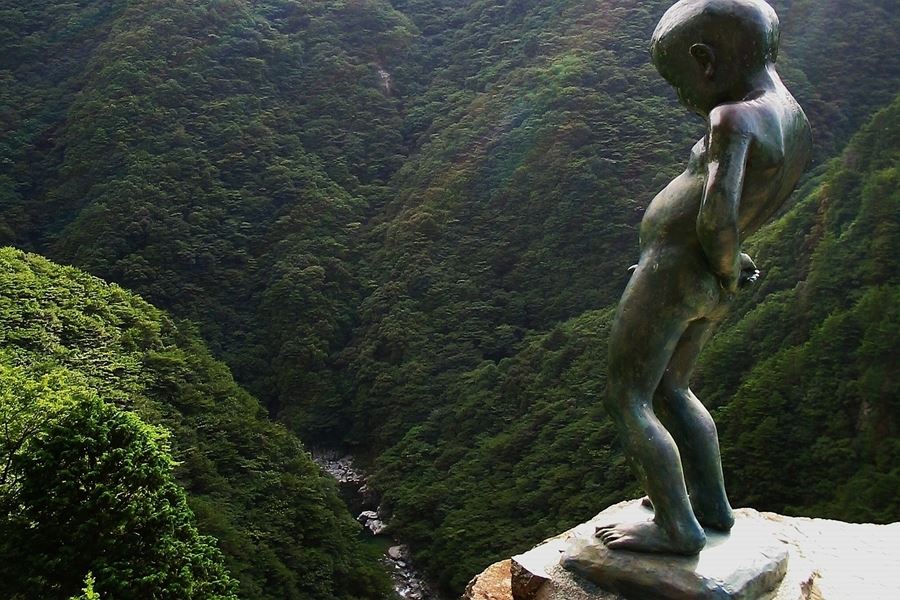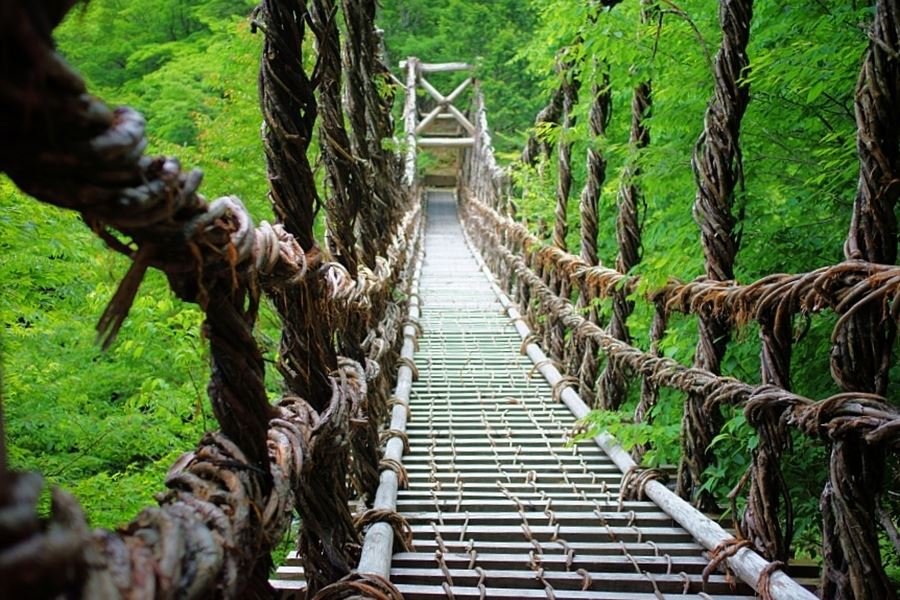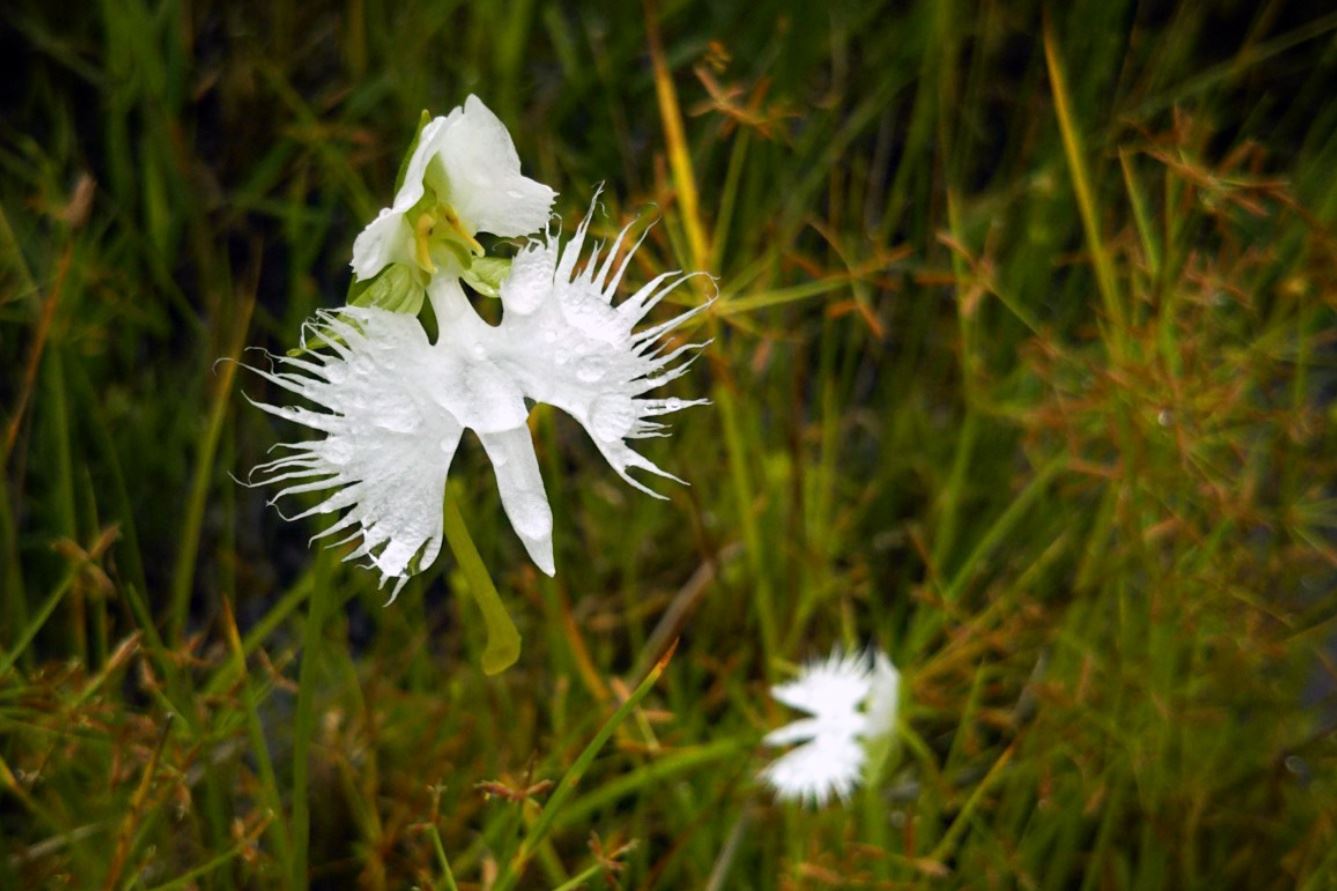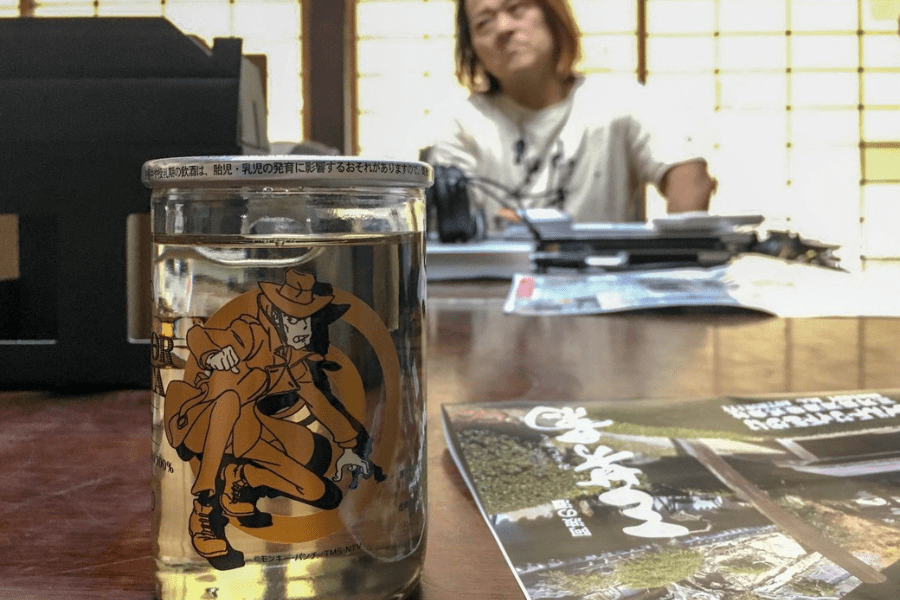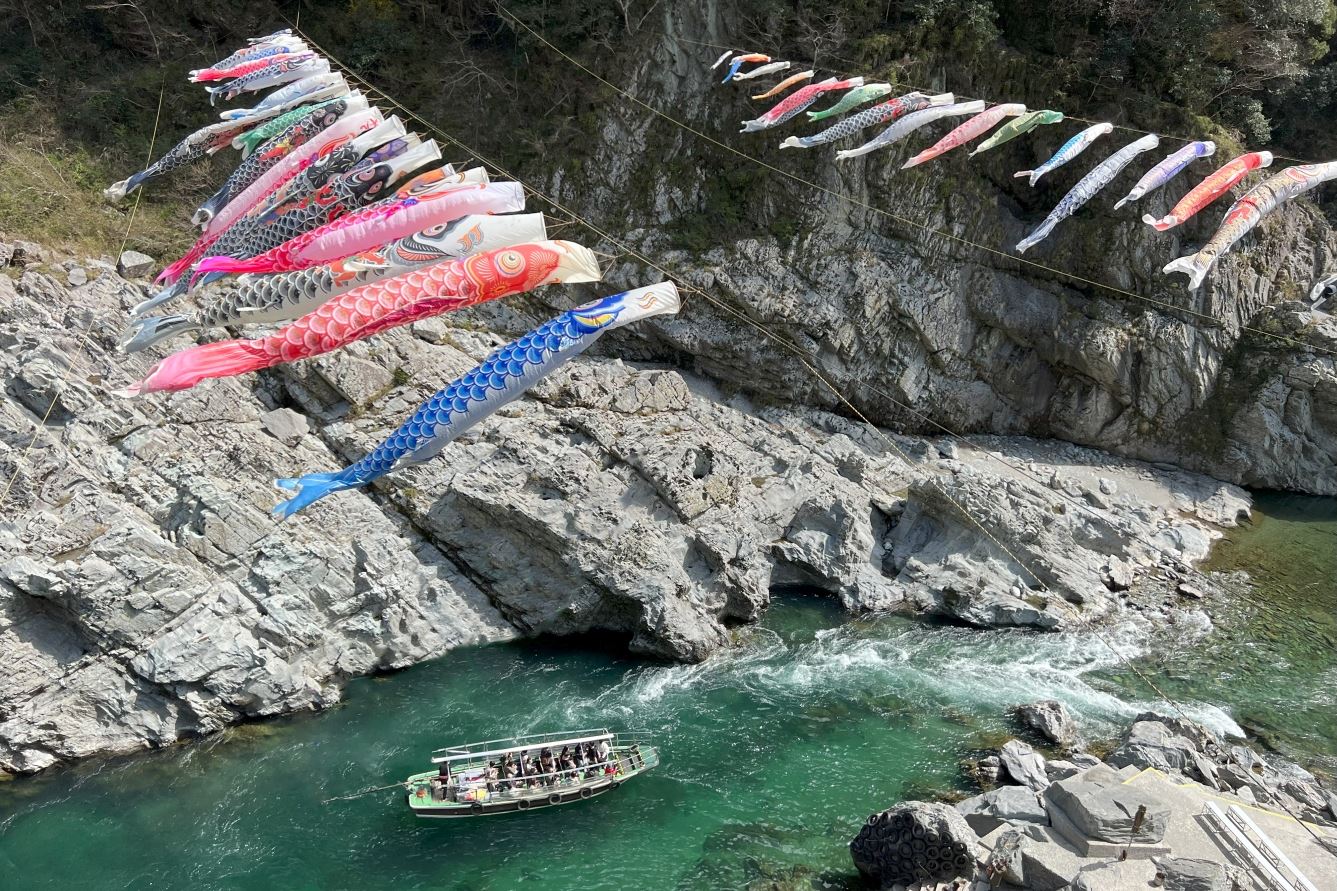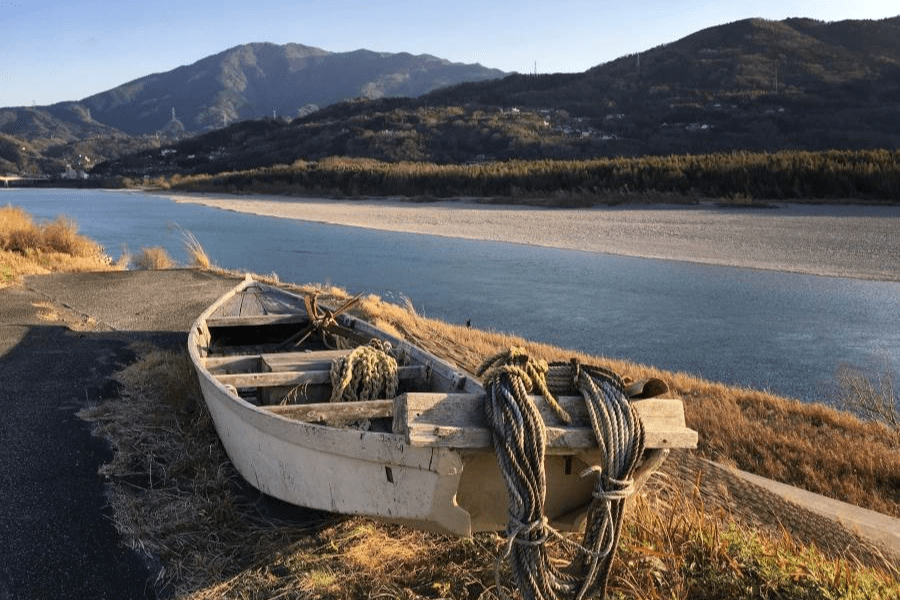Nakawa Shōten Brewery
Home » Nakawa Shōten Brewery
Nakawa Shōten Brewery
Nakawa Shōten is a sake brewer in Ikeda. It’s at the narrow end of the huge Tokushima rift valley, where the mountains rise up steeply on both sides in a V shape. From the Edo period, the area thrived on lucrative indigo and tobacco production, which in turn engendered a demand for good sake. Ikeda is sometimes called the navel of Shikoku, since it sits somewhat in the centre of the island at the crossroads between the four prefectures. Here the Yoshino River makes its big turn to the west.
The brewery is tucked away down a side street, directly behind the premises of Miyoshikiku. A pretty shop in the style of the Shōwa period fronts the road, with the brewery buildings stretching deep behind it.
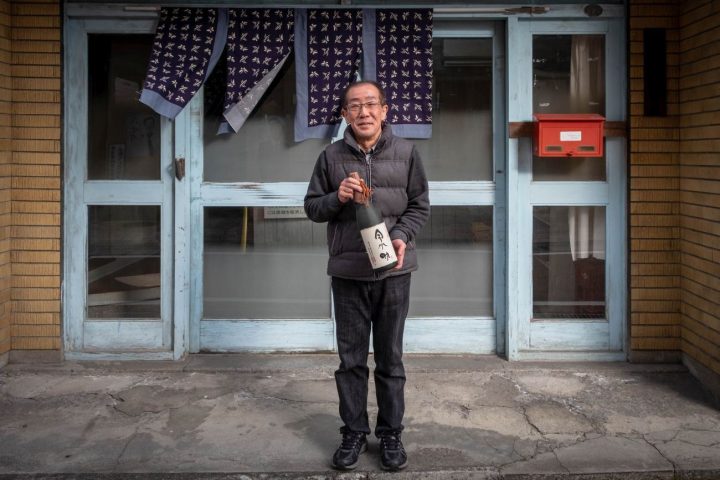
Shikoku Tours visited Nakawa Shōten on an afternoon in February when brewing had finished for the day. President Nakamura Morihiko showed us into a sitting room where he graciously answered our usual questions.
Interview
When was the brewery established?
“Before we were a sake brewery, Nakawa Shōten was established in 1802, so we’ve been operating for nearly 220 years. But originally we were selling pipe tobacco. The Ikeda, and Ikawa region next door, became very wealthy through the tobacco trade. But then the national government declared a monopoly on tobacco, so we switched to sake. Hōsui brewery was the same. There were a lot of tobacco merchants in Ikeda that switched to other products, like soy sauce, sake and other things. We switched to sake brewing in the middle of the Taishō period, about 100 years ago.
We changed to sake production because the cold climate of Ikeda is very well matched to sake brewing, and because the water is good and plentiful.
One of our brands, Imakomachi, refers to a beautiful woman. There are a couple of stories behind this, relating to my great-great-grandmother. One was that she played the koto, and one of the songs she played was called ‘Imakomachi’. The other is that she herself was a great beauty. Who knows which is true now!
Yutaka is named after our tōji, Ueta Yutaka who came to our brewery for many years. All of the Yutaka brand sake is unfiltered. It’s designed from the selection of the rice and the yeast to be enjoyed straight from the press.
Waemon is the name that each generation of our family assumes. I haven’t taken the name yet, but when I do, I’ll be the sixth.”
How many people are on the brewing team?
“From four to five. Our tōji hardly ever comes anymore, so either I or one of our employees manages production.”
What rice do you use?
“First of all, Yamadanishiki, then Gohyakumangoku, Omachi, and Nihonbare. Some years we also use Kame no Ou.”
What is your water source?
“It’s some distance from here, but we have groundwater trucked in from Mikamo.”
What yeast do you use?
“We use Tokushima LED Yume Kōbo.”
What is the defining character of your sake?
“It’s hard to sum it up in a few words. We make a whole range of sake from junmai to junmai daiginjō. But we aim to make approachable, drinkable sake.
We tried making yamahai at one time, but it turned out very clean and crisp, not like yamahai at all. So we decided there wasn’t any point in doing that!”
What is the defining character of Tokushima sake?
“Tokushima Prefecture? Well, if we were to take Kōchi as an example, people often say that Kōchi sake is dry. But it isn’t all dry, and there are many types in fact. So it’s hard to sum it up in few words. Now in Tokushima, compared with Kōchi, there’s even more variation – sweet sake, aromatic sake, dry sake. Even at Imakomachi, we make sake that’s very dry or very flowery – all sorts!”
From the point of view of sake nationwide, where is your sake positioned?
“That’s a very difficult question!”. Laughs uproariously. “I don’t even know what our position is in Tokushima! Next question…”.
Which countries are you currently exporting your sake to?
“We export a little bit to Taiwan and England. The English exports started through a contact with an exporter. I heard that our sake is actually on sale in Harrods! I asked him to send me a photo, but he hasn’t. With Taiwan, an exporter came to the Shikoku Sake Festival, looked around the brewery, and contacted us later.”
What are your thoughts about overseas drinkers of your sake?
“Japanese food is very popular at the moment, and I’d like foreign drinkers to enjoy it with nihonshu. We welcome visitors during the brewing season, particularly in the afternoon when we’ve finished brewing.”
Is there a restaurant near here where people can drink your sake?
“There are lots in fact. In Tokushima city, there are many izakaya, but a lot of them only serve Nada (Kobe) sake. However, in Miyoshi, the share of local sake is very high. So wherever you go around here, you can drink one of the makers in Ikeda. For example, they have our sake next door at Medaka no Ie izakaya, and a bit further up the road there’s Fujimoto that makes the packaged meals for the Sennen Monogatari tourism train. Most of the hotels in Ōboke and Iya have it too.”
Do any of your staff speak a foreign language?
“No! I can say that without fear of contradiction. Unfortunately.”
Brewery visit
The brewery buildings themselves are from the middle of the Meiji period and they were designed for storing tobacco. The ceilings are higher than in a typical brewery.
Nakagawa-san showed us a tank of junmai daiginjō bubbling away in a temperature-controlled tank. It was nearly ready for pressing, using the big Yabuta accordion press.
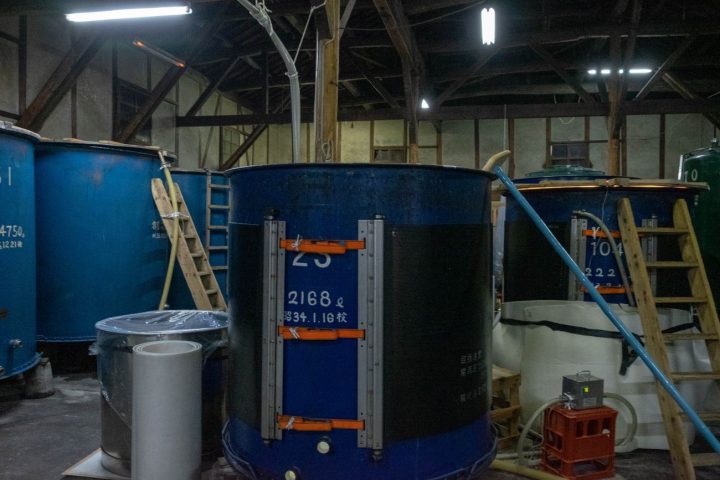
There are lots of large tanks, and they’re still being used, but not very often.
We went outside to see the tall brick and iron chimney emblazoned with the Imakomachi name. It’s no longer used, but it was essential when the boilers for steaming rice used coal or oil. There are bags of what look like rice hanging up to dry. This is gijimai, dummy rice that’s laid in the bottom of the steamer to help the steam spread evenly and prevent it forming lumps. Birds are singing in the spring sunshine.
Lying around the yard are big aluminium tanks with handles that can be filled with hot or cold water for adjusting the temperature of the mash. Above the entrance, there’s a traditional hand winch that was used for lifting tanks and other equipment to the second floor for storage. Now it’s gathering picturesque dust, but this brewery has all the modern equipment it needs to keep producing a pleasing range of traditional sake.
Information
Name in Japanese: 中和商店
Pronunciation: nakawa shōten
Address: 1756-2 Ikedacho Sarada, Miyoshi, Tokushima 778-0003
Opening hours: 8:00-17:00
Website: http://www.niji.or.jp/komachi/
Related Tours

Experience the most beautiful and interesting temples of the Shikoku Pilgrimage in seven days.

A tour for families or friends, staying in the most characterful kominka and ryokan of Shikoku.

Visit the most beautiful and interesting temples of the Shikoku Pilgrimage and walk the toughest trails.

